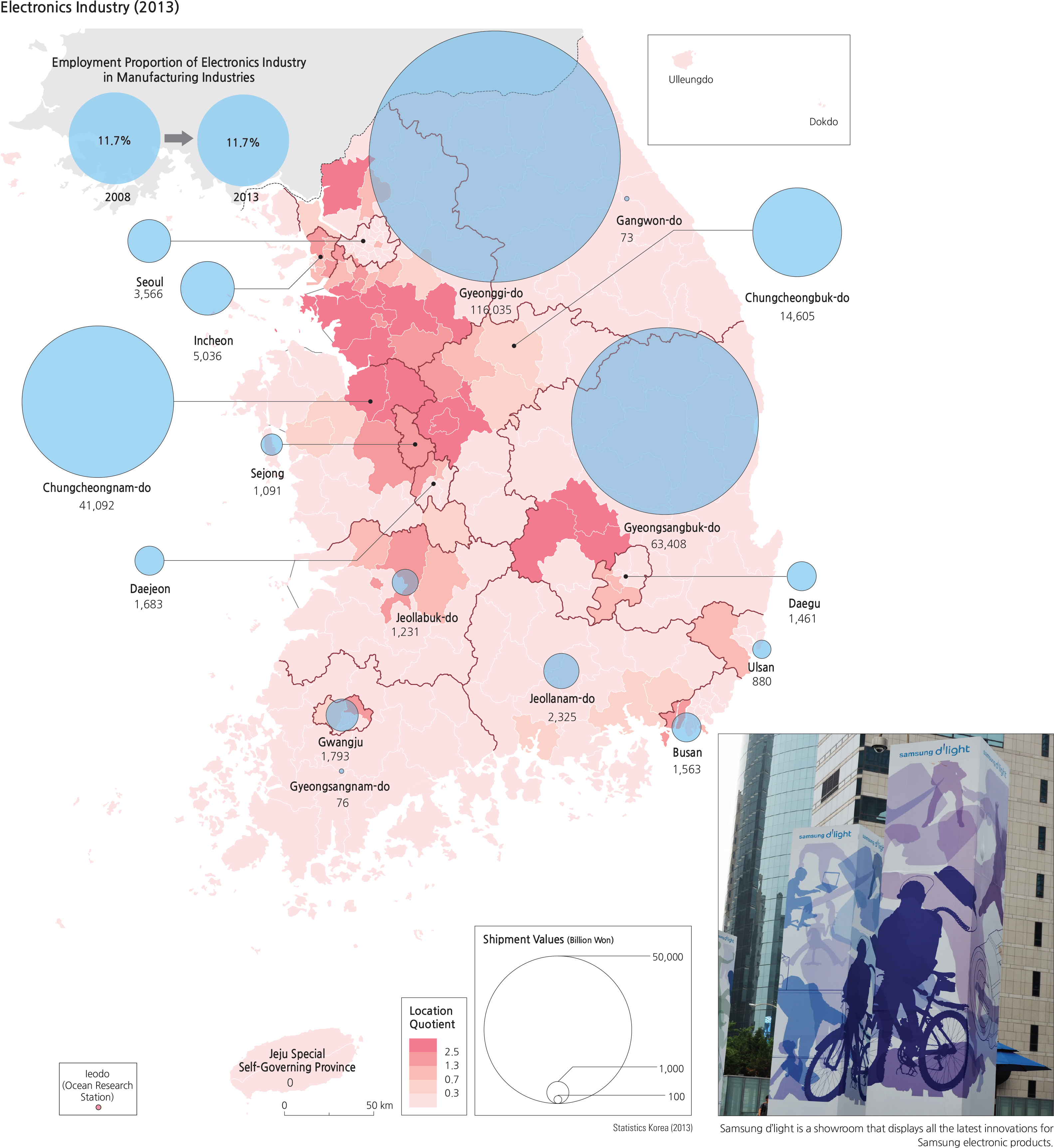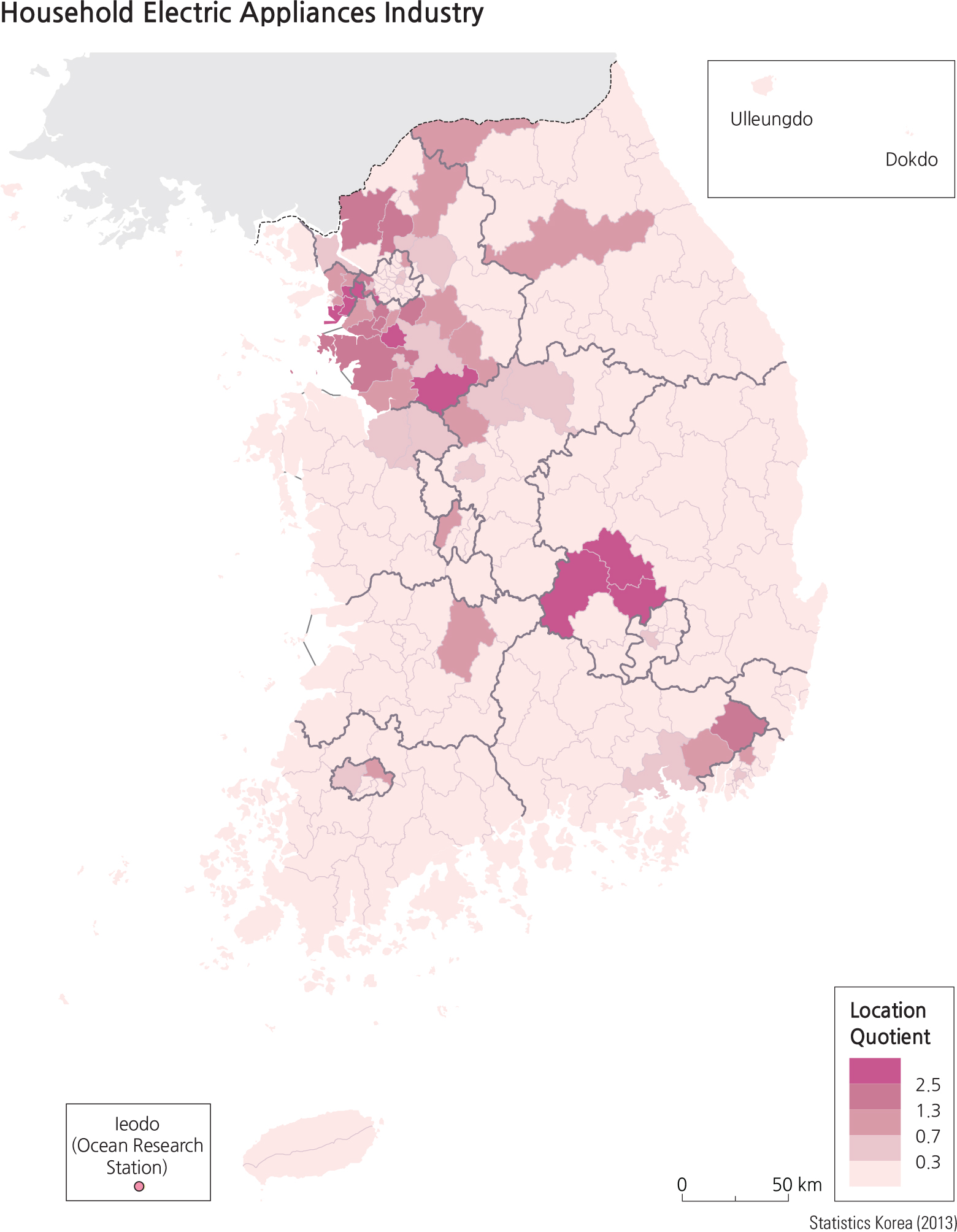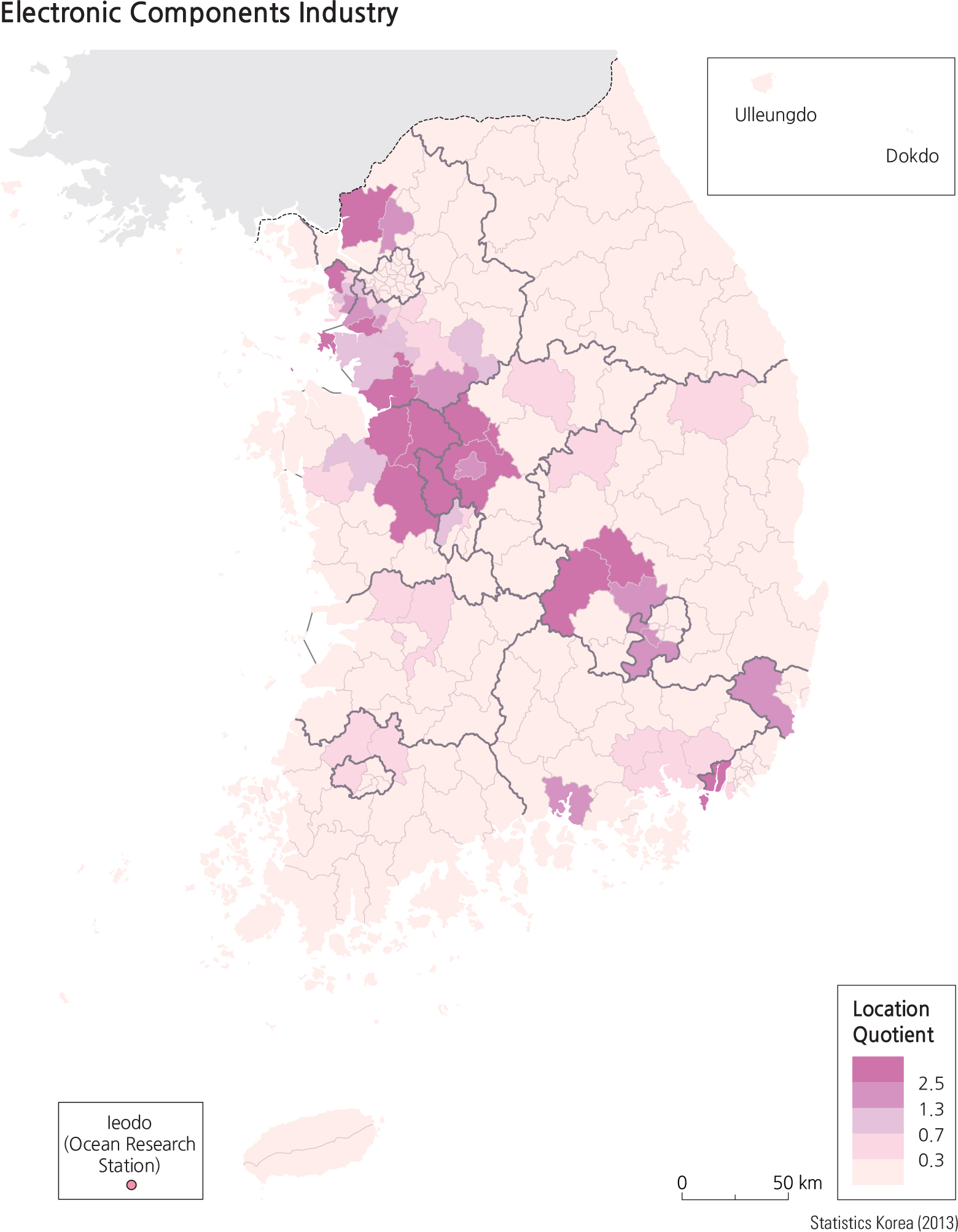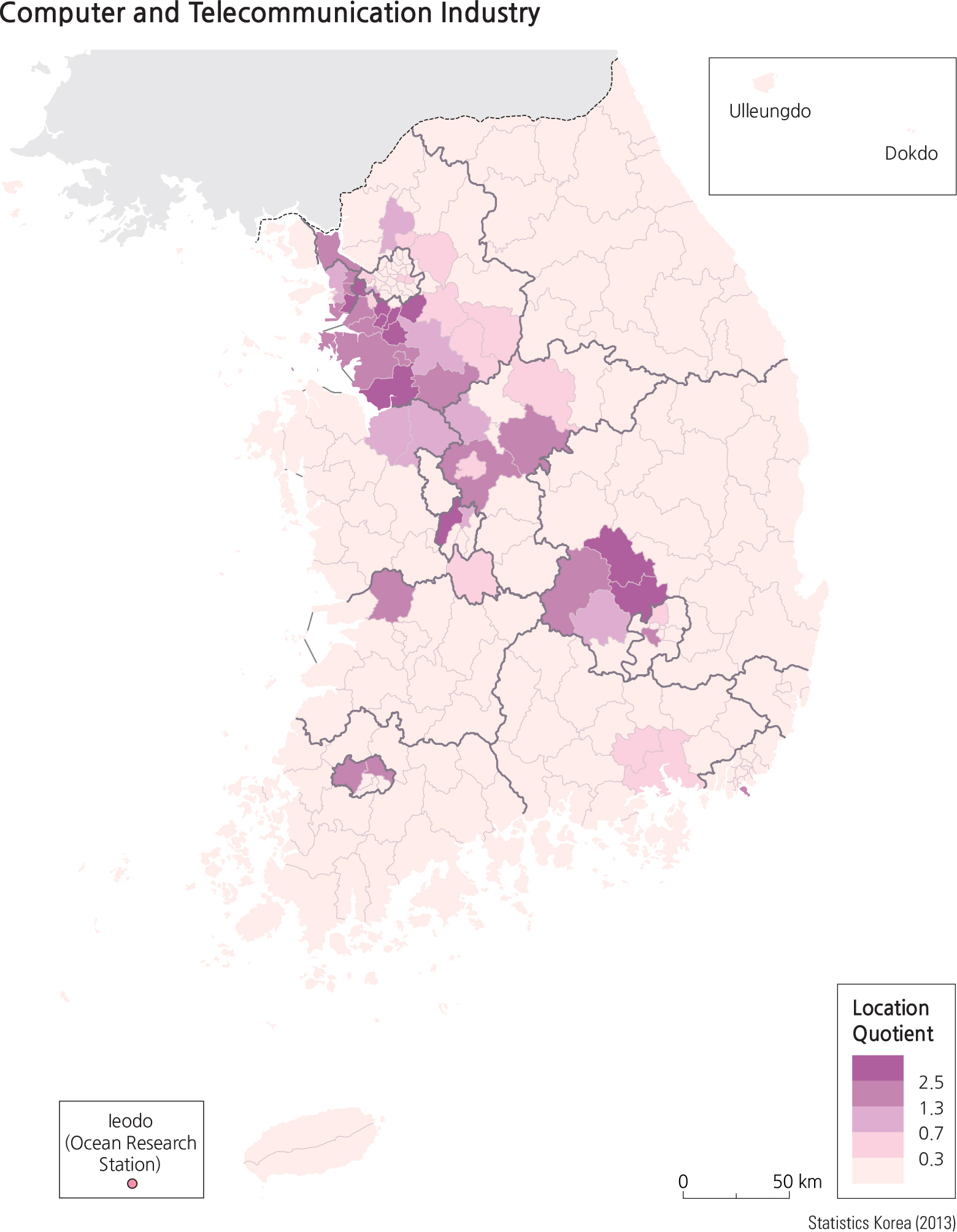In the 1980s, the electrical and electronics industries, which centered on household electrical appliances as well as industrial products, were the driving force of the Korean economy. Major sectors were the household electronic appliance industry, semiconductor industry, computer and telecommunication industry, and electronic components industry.
These trends have continued. Location quotients for electronic industries (indices for quantifying how concentrated an industry is by location) indicate that the regional concentrations are clearly in Gyeonggi-do, Chungcheongnam-do, and Gyeongsangbuk-do. Valueadded production costs, and firm sizes in Gyeonggi-do, in particular, are highest in the country instead of metropolitan centers. The distribution of specialized items or industries also appears to be different for each sub-section. The household appliances industry is regionally concentrated in Suwon, Gimcheon, and Gumi while the semiconductor industry shows a high concentration in Icheon, Yongin, and Hwaseong. The electronic components industry is concentrated in Paju, Asan, and Gumi. The computer and communication equipment industry is concentrated in Gumi, Pyeongtaek, and Chilgok-gun. Thus Gyeonggi-do and Gyeongsangbuk-do Provinces have prominent regional concentrations.
Brief Interpretation of the Maps
As noted above the Electronics Industry is exceptionally concentrated in just a handful of locations in South Korea. In addition, the four different sectors of the industry are also concentrated in distinct locations within the overall distribution of the industry in general. The four upper right maps illustrating the different sectors emphasize just how much spatial compression exists in the industry that has comprised in excess of 11% of the manufacturing industry over the last five years.
The lower right map displays a “location quotient.” This is an index of concentration that emphasizes the visual concentration of the industry which the maps above illustrate. In addition to concentration, the lower map depicts with graduated circles the distribution of the value of the products shipped from the different areas in Gyeonggi-do Province.
When an industry sector is densely concentrated, it indicates that the economies of scale and associations exist that old companies need and new firms use to grow. When these factors are apparent, what are they? In many such high value product sectors rapid communication contributes to success. Are these communications in a digital or a physical form? What type of break in this communication would cause a major disruption in production?




